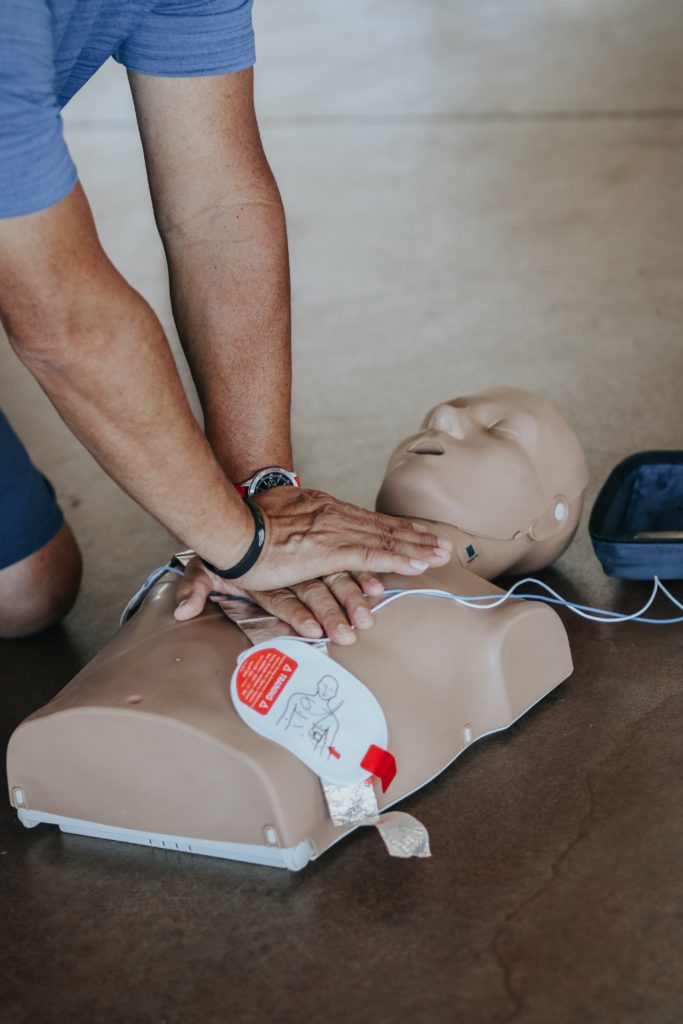Administering lifesaving CPR on someone who is not breathing can help keep them alive until emergency services arrive.
When a bystander initiates resuscitation immediately after someone’s heart stops breathing, it can double or even triple the chances of survival.
Here’s a beginner’s guide to performing CPR.
Definition
Cardiopulmonary resuscitation is a hands-on medical intervention used in emergencies to restore breathing and normal heartbeat in a person who has gone into sudden cardiac arrest.
CPR involves the performance of chest compressions and, in some cases, mouth-to-mouth resuscitation. Doing this can keep the blood flowing to the brain and other organs until further medical help arrives. When the oxygen-rich blood does not get to the brain, damage can occur within minutes.
It is ideal for everyone to get trained in CPR. If not, it may be the reason to hesitate in helping someone in an emergency.
In a sudden cardiac arrest, doing first aid interventions means potentially saving a person’s life.
CPR Facts And Stats
Here are some facts to know about this lifesaving technique.
- CPR can double (or triple) a person’s chance of survival from sudden cardiac arrest. If it is performed within four minutes of collapse and defibrillations are given within 10 minutes – the person will have a 40% chance of survival.
- Children as young as nine are capable and strong enough to manage chest compressions and back blows.
- Every minute that goes without resuscitation, the person’s chance of making a full recovery will be reduced by around 10%. Waiting for an ambulance or further help to arrive is not a wise move when a person’s heart stops.
- The average time it takes an ambulance to arrive on the scene is within eight minutes. However, before the EMS can dispatch an ambulance, someone must make a call and let the responder do an assessment.
- CPR has its benefit than just in a cardiac emergency. This procedure also helps manage airway obstruction, choking management, and traumatic injury. It is also helpful in many emergencies, including drowning, chemical exposure, insect bites and bee sting reactions, anaphylaxis, and even bleeding wounds.
How To Do CPR: A Step-by-Step Guide
CPR techniques may vary slightly depending on the age of the person. The following steps can apply to adults and children over eight years old.
Place your hands on the person’s chest.
Make sure the casualty is lying on his back on a firm surface. Kneel on the side and place the heel of your hand on the centre of their chest. Place the other hand on top of the first one while putting the weight directly over the hands.
Perform chest compressions.
Lean forward and make sure the shoulder is directly over the patient’s chest. Press down on the chest for about two inches, then release the pressure. Let the chest completely come back up before each compression.
Give 30 compressions at a rate of 100 compressions per minute.
Give rescue breaths.
Pinch the nostrils closed using one hand and support the chin with the other hand. Take a normal breath, put your mouth cover the casualty and provide rescue breathing until you can see their chest rise.
Repeat cycle.
Repeat the cycle of 30 chest compressions and two rescue breaths until help arrives or the casualty regains consciousness.
If the patient’s condition did not improve, call triple zero (000) and send someone to get an AED.
Get Trained
Anyone can learn how to perform CPR in traditional face-to-face training or via an online zoom course.
CPR training can give bystanders the skills, knowledge, and confidence to jump into action when the situation requires it. The more people who know this technique, the more likely one will be around when someone needs it.
Learn more about CPR from First Aid Course Darwin.
If you want to gain confidence in performing cardiopulmonary resuscitation, consider taking a CPR course with us.








